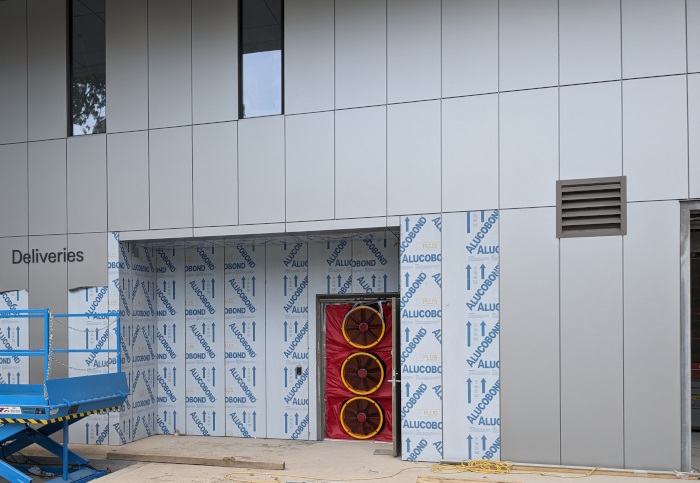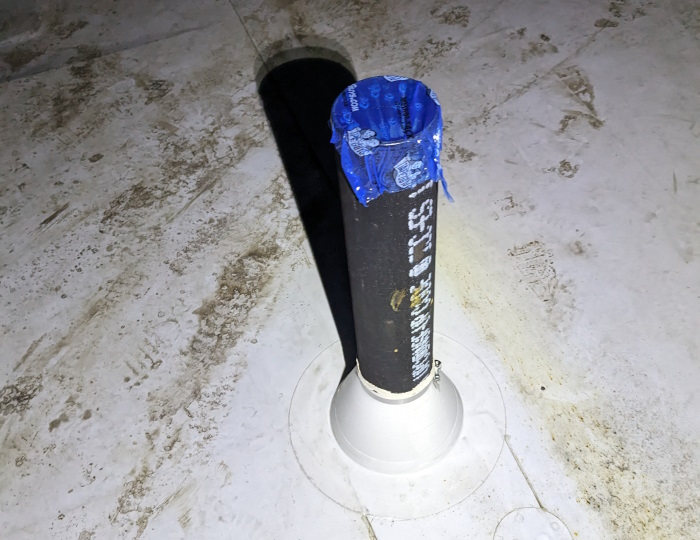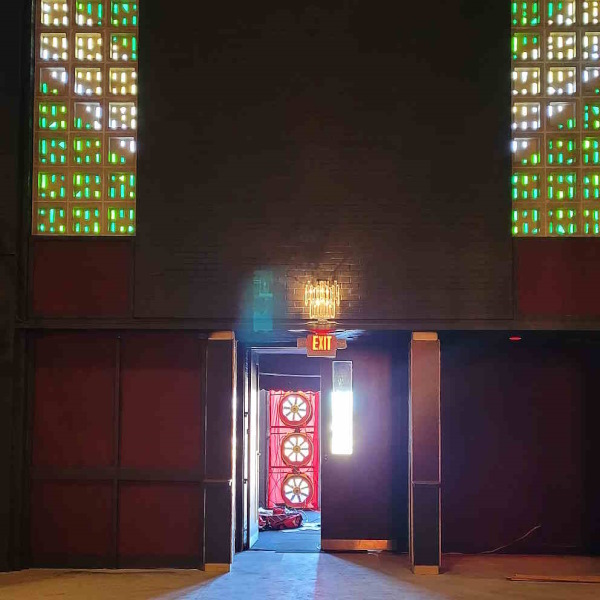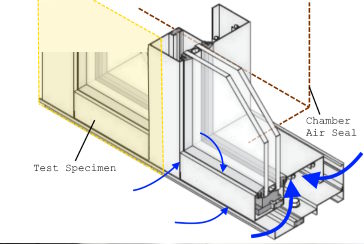Introduction
ASTM E779 is a standardized test method used to determine the air leakage rate of building envelopes by means of fan pressurization and depressurization. This test method is widely used in building performance assessments, energy efficiency studies, and airtightness validation for both new and existin
Air leakage significantly affects a building's thermal performance, indoor air quality, and occupant comfort. The ASTM E779 procedure provides a quantitative assessment of a building’s air leakage characteristics, allowing for comparisons between buildings, evaluation of construction techniques, and verification of performance improvements after retrofitting.
Additionally, ASTM E779 is recognized as a compliance path in various building codes and energy standards, including the International Energy Conservation Code (IECC) and ASHRAE 90.1, for demonstrating building envelope airtightness.
^ Back to Top
Scope and Purpose
1. Scope
- ASTM E779 measures the air leakage rate of a building envelope using controlled pressurization and depressurization.
- The test is conducted under conditions of low wind speeds and small indoor-outdoor temperature differentials to minimize external influences.
- It does not measure real-world air exchange rates or leakage under normal weather conditions.
- The procedure is applicable to single-zone buildings but can be adapted for multi-zone buildings by equalizing pressures between adjacent zones.
- The test measures the air leakage rate at multiple different pressure differentials to establish a leakage curve, providing a detailed characterization of the envelope's airtightness.

2. Purpose and Applications
- To quantify a building’s airtightness and compare leakage performance between buildings.
- To identify leakage sources and assess the effectiveness of air-sealing measures.
- To deliver accurate, actionable verification data for building envelope commissioning programs.
- To evaluate retrofits and their impact on reducing air infiltration/exfiltration.
- To supplement ventilation studies when used alongside weather data and leak location mapping.
- To serve as an alternative to tracer gas methods (ASTM E741) for airtightness characterization.
- To comply with energy codes and standards, including:
- IECC 2012 and 2021, which recognize ASTM E779 as a compliance path for air barrier performance, requiring a maximum air leakage rate of 0.40 cfm/ft² at 75 Pa.
- ASHRAE 90.1 (2016 and 2019), which permits or mandates whole-building air leakage testing per ASTM E779 as a means to demonstrate compliance with envelope performance requirements.
^ Back to Top
Definitions
- Air Leakage Rate – The volume of air moving across the building envelope per unit time, driven by pressure differentials.
- Effective Leakage Area (ELA) – The total sum of unintentional openings in a building, normalized to a 4 Pa reference pressure.
- Air Leakage Graph – A log-log plot showing airflow rates at various pressure differentials.
- Single-Zone Building – A space where internal pressure differences do not exceed 5% of the indoor-outdoor pressure differential.
- Pressurization and Depressurization – Methods of testing where a fan forces air into (pressurization) or draws air out of (depressurization) the building to measure airflow resistance.
^ Back to Top
Test Method Overview
1. Test Setup and Equipment
The following equipment is required to perform ASTM E779:
- Blower Door System – A calibrated fan setup capable of inducing controlled pressure differentials.
- Manometers – Air pressure-measuring devices.
- Airflow Measuring Devices – Instruments to measure airflow rates with ±5% accuracy.
- Temperature Sensors – Devices with an accuracy of ±1°C to record indoor and outdoor conditions.
2. Test Conditions
- The test should be conducted under calm weather conditions with low wind speeds.
- Indoor-outdoor temperature differentials should be minimized to reduce the influence of stack effect.
- All exterior doors, windows, and ventilation openings should be closed, while interior doors should remain open to ensure a single-zone condition.

3. Procedure
- 1. Preparation
- Seal openings used for test equipment installation.
- Verify HVAC dampers, chimneys, and ventilation openings are set appropriately.
- Measure and record temperature, wind speed, and baseline pressure differentials.
- 2. Pressurization and Depressurization Testing
- Use a blower door system to induce a pressure range of 10–60 Pa.
- Take airflow measurements at multiple pressure differentials, using increments of 5 to 10 Pa.
- Repeat the process for both pressurization and depressurization.
- 3. Data Collection and Verification
- Record airflow rates and pressure differentials.
- Verify stability by averaging measurements over at least 10 seconds per reading.
- If leakage conditions change (e.g., a door or window is forced open), the test must be restarted.
^ Back to Top
Data Analysis and Calculations
1. Standardized Data Corrections
To ensure consistency across different testing environments, airflow rates must be corrected for:
- Air density differences due to elevation and temperature variations.
- Viscosity corrections for temperature-dependent airflow resistance.
- Baseline pressure offsets, critical for ensuring accuracy in pressure differentials.
2. Air Leakage Characterization
- Airflow data is plotted against pressure differentials on a log-log scale.
- A best-fit curve is generated to calculate:
- Air Leakage Coefficient (C) – Represents the inherent leakage characteristics of the envelope.
- Pressure Exponent (n) – Defines the relationship between pressure differential and leakage rate.
- The effective leakage area (ELA) is determined at a reference pressure of 4 Pa (or other, if specified).
^ Back to Top
Code Compliance Considerations
- ASTM E779 is widely recognized in IECC and ASHRAE 90.1 as a compliance pathway for building envelope airtightness.
- Many jurisdictions require whole-building air barrier testing, particularly for new construction and high-performance buildings.
- Compliance thresholds typically specify a maximum air leakage rate of 0.40 cfm/ft² at 75 Pa.
- Testing must be conducted by an independent third party and reported according to standardized procedures.
^ Back to Top
Conclusion
ASTM E779 provides a reliable, repeatable method for assessing the airtightness of a building envelope using fan pressurization. While it does not measure real-world air exchange, it serves as a valuable diagnostic tool for energy efficiency evaluations, construction quality assurance, and performance validation of air-sealing measures. Additionally, its role in building code compliance further underscores its significance in modern building performance assessments.
By following strict procedural guidelines, ASTM E779 helps quantify air leakage rates accurately, enabling data-driven decision-making for building performance improvements.
^ Back to Top






